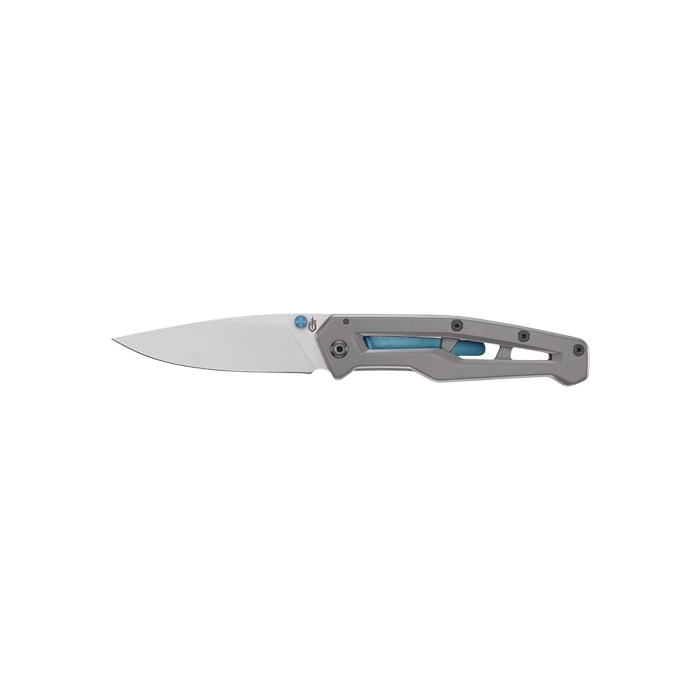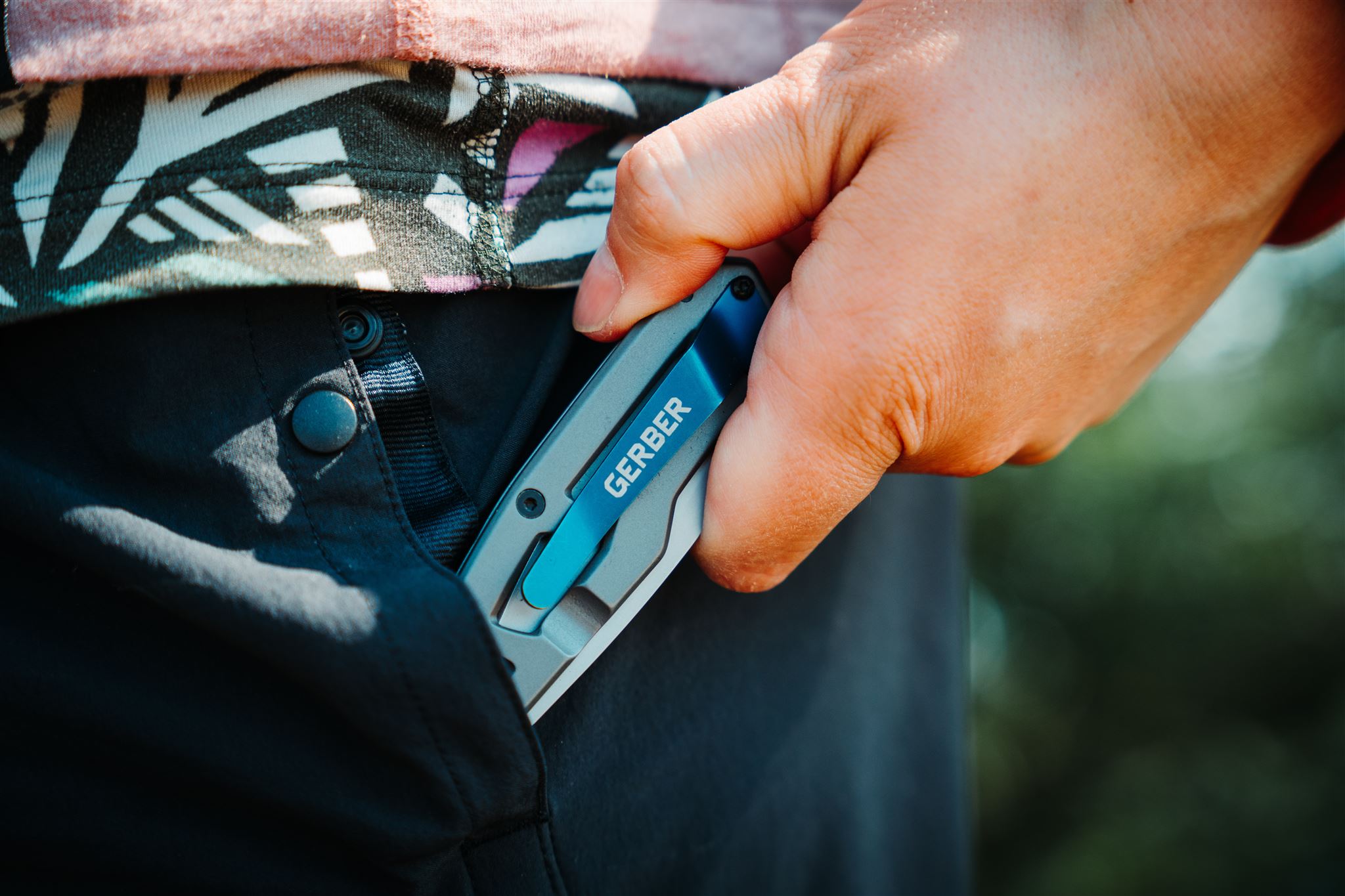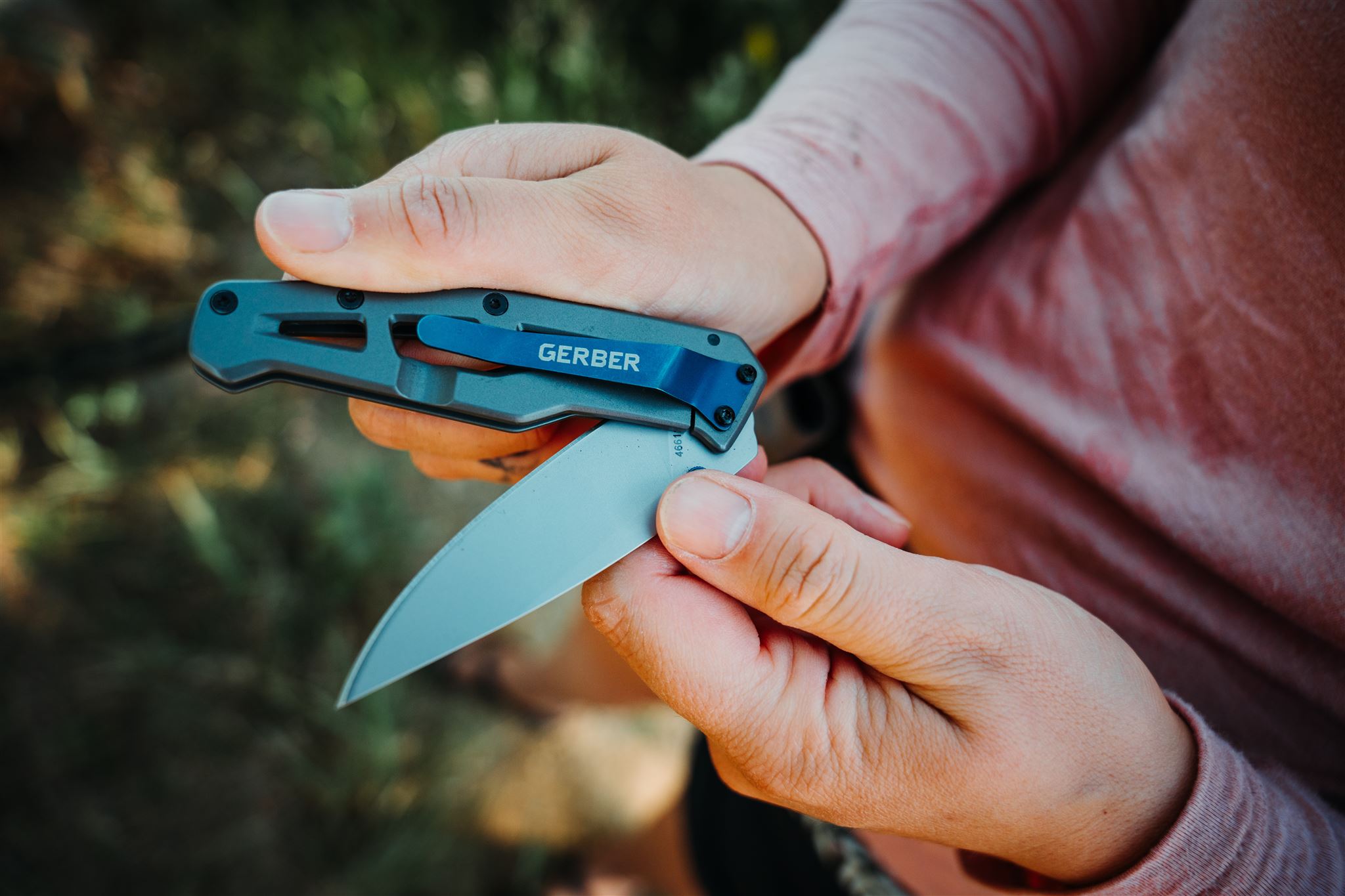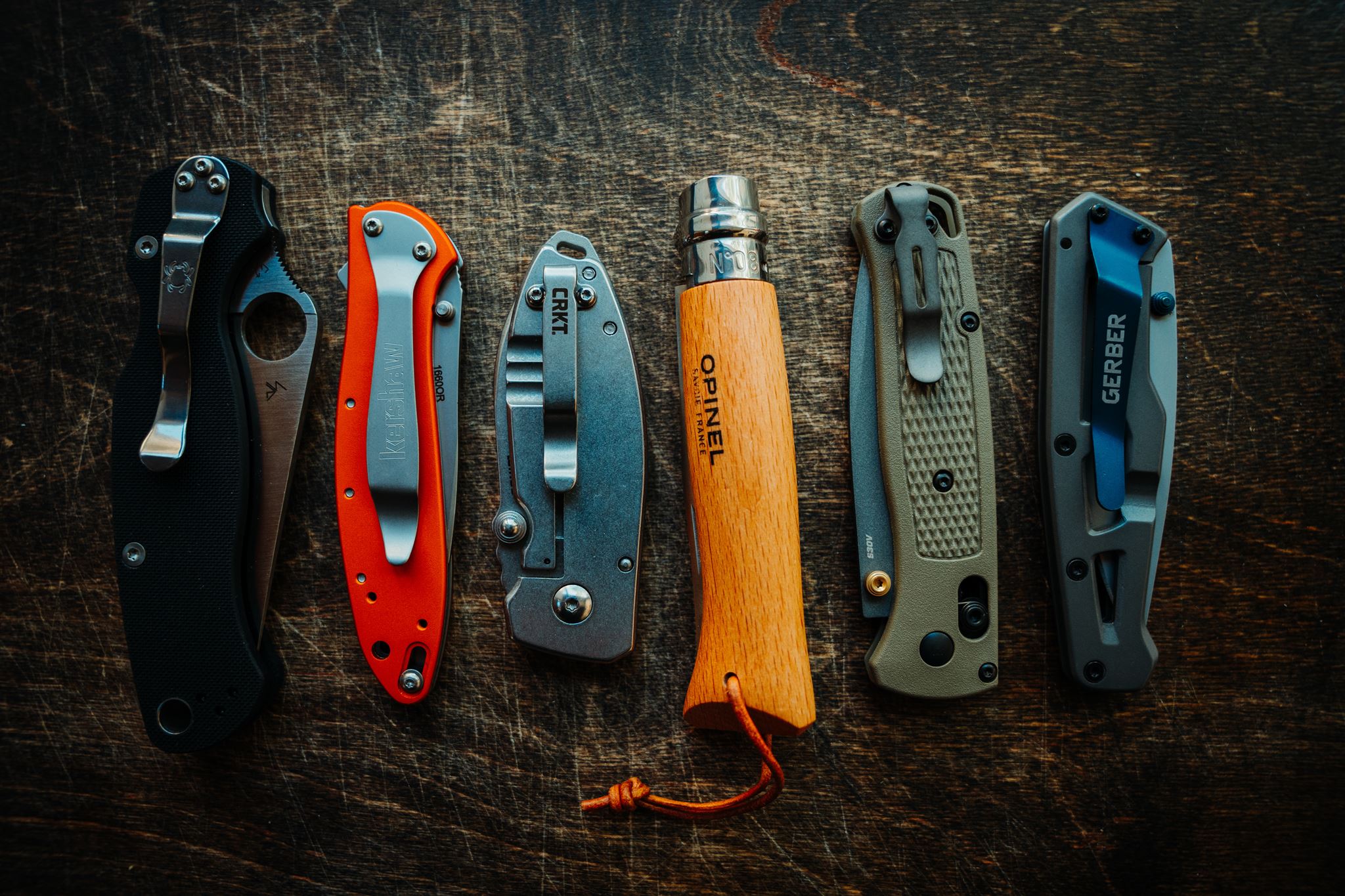Bottom Line
One of the first things you may notice about the Gerber Paralite is the skeletal frame. This design attempts to lower the weight and increase the knife’s portability (plus, it looks cool). Despite the trimmed-out frame, it remains durable and quite strong under the stresses of everyday use.
The blade’s performance is very average. It is sharp out of the box, but it can dull quickly, requiring more frequent maintenance. One feature unique to the Gerber Paralite is the ambidextrous dual thumb studs that make it easy to open and a frame lock for one-handed closure. There’s a lot to like about the Paralite knife, but remember that it is made like many other budget knives and is best for simple uses. If you want more options, see our guide to the best pocket knives to find your ideal folding knife.
Quick Specs

Gerber Paralite
Best Durable & Affordable Pocket Knife
Price:
$31
Measured Weight:
3.4 oz.
Blade Length:
3.1 in.
Overall Length:
7.3 in.
Blade Material:
5Cr13 Stainless Steel
Pros
- Affordable price
- Long blade
- Ergonomic handle design
- Easy to sharpen & maintain
- Very secure pocket clip
- Comfortable to carry in pocket
- Ambidextrous opening
Cons
- Can be difficult to close
- Not the most lightweight
- Clip can be hard to slide into pocket
Build Quality
The Gerber Paralite is an affordable yet well-constructed knife. It has a skeletal frame, cutting some weight (still relatively heavy for the size), but it remains sturdy and trustworthy. The blade is made from 5Cr13 stainless steel, which holds an edge well and is easy to sharpen. The blade is quite strong, but it can be prone to chipping and cracking if used outside normal use cases.
While not consistent, the blade can make contact with the handle pin, leading to damage over time. The frame allows for some adjustability, but be aware of loose screws that could compromise performance. For the price, the construction is reliable and versatile as an EDC knife.

Blade Retention & Stability
Out of the box, we noticed that the blade was sharp and ready to use. Some users have complained about the knife being dull, so we were concerned about this right away. The blade is tightly secured into the frame, and it can take some time to break in or loosen up for smooth operation.
The blade retains its edge well, but with consistent or rigorous use, it may require frequent honing. Luckily, this type of blade is easy to sharpen and maintain. For the price, the quality of the knife materials is quite balanced and should be long-lasting if well-maintained.
Ergonomics & Grip
The skeletal handle of this knife doesn’t seem to interfere at all with comfort during use. The handle is thin but a fairly average size for a pocket knife (4.1 in). The handle size may impact your grip if you have larger hands, but we found it comfortable for most basic uses. The shaping of the handle enhances comfort while holding it as there is a dip to rest your pointer/middle fingers and another small bump at the butt of the knife to rest your pinky on or prevent slipping.

Corrosion Resistance
The 5Cr13 stainless steel holds up well under normal use but requires regular cleaning and maintenance to avoid rusting or corrosion. This material contains around 13% chromium, which forms a protective oxide layer on the surface. This layer prevents moisture and oxygen from penetrating the materials, which is typically the primary cause of corrosion.
As more of a budget blade, the corrosion resistance on this knife was surprising. It seems that the main downfall of these materials would be a lack of maintenance. So, remember to clean your blade and don’t leave it out in the rain, and you should be just fine.
Locking Mechanism
The Gerber Paralite utilizes a classic frame lock mechanism. A frame lock is integrated into the knife’s handle, and when the blade is opened, part of that handle moves into position to press against the spine of the blade. To close the knife, you have to push the frame lock away from the blade to allow it to go back into the handle. This frame lock can work with one hand, but this one is a little bit tight, so we used two hands for safety.
Frame locks are standard among pocket knives, and this one did provide enough security for basic tasks and pressure. Be careful not to use the blade until the knife is fully locked, as we found when you initially flip the blade up and hear a faint click, the lock may not yet be engaged. This poses some dangers for users if they don’t check to make sure the blade is actually in the locked position. Our primary concern with that aspect of the lock is if it will wear over time and lead to locking failures under more extreme pressures.
We experienced no issues using the knife as long as the lock was fully engaged. It is a very straightforward design that fits seamlessly into the skeletal frame.

Weight
The Gerber Paralite isn’t the lightest knife available. It weighs around 3.4 oz and feels a little heavy in your hand for its size and skeletal frame. However, it is still a fairly lightweight knife, and the full steel construction should contribute to its overall durability and lifespan.
The handle seems to contribute the most to the weight of the knife because the blade itself isn’t necessarily that burly. The weight of the handle contributes somewhat to the control and comfort of the knife while it is in use, so the weight of the knife for the performance feels adequate.

Should You Buy the Gerber Paralite?
The Gerber Paralite is a durable pocket knife that any average outdoor enthusiast will find useful and suitable for their needs. It is compact and affordable, and the ambidextrous opening makes the knife slightly more accessible. The knife is fairly basic, and the unique frame structure is easy to keep clean.
A premium option may be best if you’re looking for a knife with more blade control and requires less maintenance to keep an edge. For budget-conscious shoppers, though, the Gerber Paralite offers excellent value for light daily tasks.
What Other Pocket Knives Should You Consider?
Kershaw Leek Review: The Kershaw Leek pocket knife is a more precise option than the Gerber Paralite. The primary features that distinguish the Leek from the Paralite include an assisted opening mechanism and a secure tip-lock system. While the Paralite provides an ambidextrous opening design, it is more difficult to open and lacks the added safety feature of the tip-lock system. Though slightly pricier, the performance and ease of use may justify the investment for many users.
Benchmade Bugout 535 Review: If you’re looking for an ultralight option with superior edge retention, the Benchmade Bugout 535 might be the right choice. Weighing only 1.9 ounces, this knife is highly portable and perfect for backpacking or as a backup knife. The drop-point blade is versatile and durable, perfect for a variety of tasks. Although it’s more expensive than the Paralite, its high-quality materials and construction offer long-term value.
Opinel No. 8 Review: The Opinel No. 8 is a pocket knife you can feel good about buying on a whim. It is one of the cheapest knives we’ve reviewed, and it only weighs 1.5 ounces. While it is highly affordable, it performs like a budget knife would, but with the added charm of a wooden handle. The classic design has a collar lock, which requires two hands to open but is still effective. This knife is best for those seeking a cheap knife and appreciate a simple, traditional pocket knife design.

